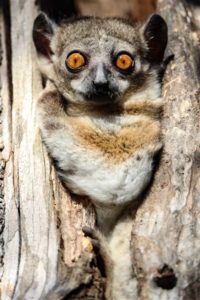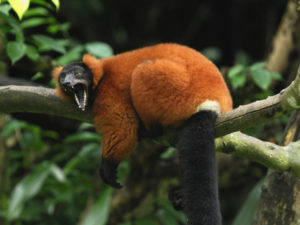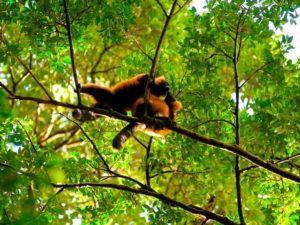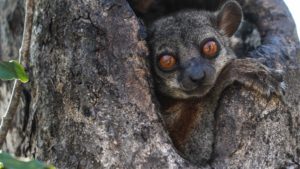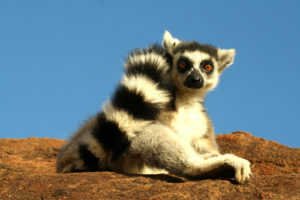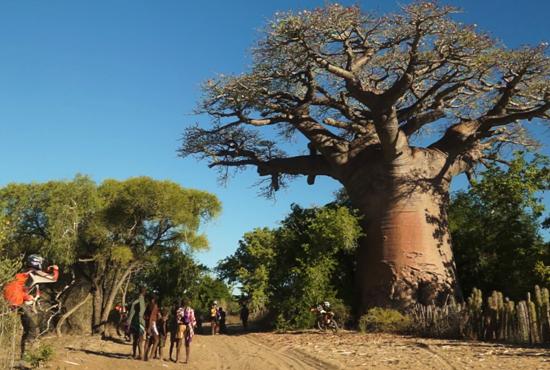Introduction to King Julian from Madagascar
Origins and characteristics of the character

King Julian, the eccentric and self-proclaimed king lemur, is an iconic character from the animated film Madagascar, produced by DreamWorks Animation. First introduced in 2005, King Julian is a crowned lemur known for his overflowing charisma, exuberant personality, and joyful dances. Inspired by the real lemurs of Madagascar, this character is an anthropomorphic representation that captures the joyful essence and energy of these fascinating creatures. With his golden crown and royal attitude, King Julian stands out for his love of parties and constant desire to be in the center of attention. His eccentric character and memorable lines quickly made him a favorite among the audience, adding a touch of humor and fantasy to the film series.
Popularity and impact in popular culture
Since his first appearance, King Julian has gained immense popularity, becoming a cult character in popular culture. His popularity extends beyond the Madagascar films, thanks to spin-off series like The Penguins of Madagascar and All Hail King Julien, where he continues to entertain viewers with his outrageous adventures. The character has also inspired numerous merchandise, including toys, clothing, and video games. King Julian’s popularity has also helped draw attention to the real lemurs of Madagascar, sparking curiosity and interest in these unique animals and their natural habitat. As an unintentional ambassador for lemurs, King Julian has played a significant role in raising awareness for the conservation of these endangered species.
The real lemurs of Madagascar
The different species of lemurs
Madagascar is home to an incredible diversity of lemurs, with over 100 recorded species. These primates, endemic to the island, vary considerably in size, behavior, and appearance. Among the most well-known species are the ring-tailed lemur, recognizable by its black and white banded tail, and the indri, the largest of the lemurs, renowned for its powerful vocal calls. Other notable species include the mouse lemur, the smallest primate in the world, and the aye-aye, known for its unique characteristics and strange appearance. Each lemur species plays a distinct role in Madagascar’s ecosystem, contributing to the island’s biodiversity.
Natural Habitat and Geographic Distribution
Madagascar’s lemurs occupy a variety of habitats, ranging from tropical rainforests to deciduous dry forests and spiny zones. Their geographic distribution is influenced by the specific environmental conditions of each region on the island. For example, ring-tailed lemurs prefer the dry forests and rocky areas of southern and southwestern Madagascar, while indris are primarily found in the humid forests of the east. These diverse habitats offer unique ecological niches, allowing each lemur species to adapt and thrive in its specific environment. However, deforestation and habitat fragmentation pose serious threats to the lemurs’ survival.
Social Behavior of Lemurs
Group Living and Hierarchy
Lemurs are social creatures that often live in groups, whose size and structure vary depending on the species. For example, ring-tailed lemurs live in matriarchal groups that can reach up to 30 individuals, where females dominate males. This social hierarchy is maintained through dominant and submissive behaviors, often displayed through body postures and aggressive or appeasing interactions. Lemur groups are generally very cooperative, sharing responsibilities for food search, predator protection, and young education. This group lifestyle allows lemurs to maximize their chances of survival in often hostile environments.
Modes of Communication and Interactions
Lemurs use a variety of communication modes to interact with each other, including vocalizations, gestures, and olfactory signals. Each species has its own repertoire of sounds, ranging from alarm calls to territorial songs. Indris, for example, are known for their melodious calls that can be heard several kilometers away. In addition to vocalizations, lemurs use facial expressions and body postures to communicate intentions or emotions. Olfactory signals also play a crucial role, with many species using scent glands to mark their territory or signal their reproductive status. These complex modes of communication allow lemurs to maintain harmonious social relationships and coordinate their daily activities.
Role of Lemurs in the Ecosystem
Contribution to Biodiversity
Lemurs play a vital role in the ecosystem of Madagascar, significantly contributing to the island’s biodiversity. As frugivores, they participate in seed dispersal, aiding in forest regeneration. Some species, like ring-tailed lemurs, also consume insects and small vertebrates, thus contributing to the regulation of the populations of these prey. Additionally, lemurs interact with a variety of plants and animals, creating complex ecological networks. Their presence and activities influence the structure and composition of plant and animal communities, making lemurs key players in maintaining the health and resilience of Madagascar’s ecosystems.
Relations with other species
Lemurs have diverse ecological relationships with other species, ranging from predation to mutualism. For example, certain plants depend on lemurs for pollination or seed dispersal. Interactions with predators, such as fossas, also influence lemur behaviors and survival strategies. In turn, lemurs can affect the populations of their prey and the plants they consume. These interspecific relationships are essential for the functioning and balance of Madagascar’s ecosystems. The complexity of these interactions highlights the importance of lemurs in the ecological dynamics of the island.
Comparison between King Julian and real lemurs
The eccentric aspects of King Julian
King Julian is an eccentric character known for his spirited dances, love of parties and constant desire to be the center of attention. These personality traits, while entertaining, are greatly exaggerated compared to the behaviors of real lemurs. For example, real lemurs do not dance as extravagantly and do not show the same level of vanity as King Julian. However, certain aspects of his behavior, such as living in groups and social interactions, reflect observed realities in lemurs. As a fictional character, King Julian offers an anthropomorphized and comedic version of lemurs, capturing the imagination of the public while taking creative liberties with their actual behavior.
Authentic lemur behaviors
Unlike King Julian, real lemurs display more nuanced behaviors adapted to their natural environment. For example, ring-tailed lemurs, while they live in social groups, do not have a king or leader as charismatic as King Julian. Their hierarchy is rather matriarchal, with females dominating males. Lemurs are also much more discreet in their interactions, using vocalizations, olfactory signals, and body postures to communicate. Their behavior is largely influenced by the need for survival, including the search for food, avoidance of predators, and reproduction. These authentic behaviors are essential for understanding and conserving these fascinating creatures in their natural habitat.
Protection and conservation of lemurs in Madagascar
Current threats and challenges
Madagascar’s lemurs face numerous threats that jeopardize their survival. Deforestation, resulting from slash-and-burn agriculture, logging, and urbanization, is the main cause of habitat loss. Additionally, illegal hunting and the pet trade exacerbate the situation. Climate change adds further pressure, impacting the availability of food resources and altering natural habitats. These combined challenges have led to a drastic decline in lemur populations, with many species classified as endangered or critically endangered by the International Union for Conservation of Nature (IUCN).
Preservation initiatives and research projects
Facing these threats, various preservation initiatives and research projects have been implemented to protect lemurs and their habitat. Local and international organizations collaborate to promote the conservation of Madagascar’s forests, involving local communities in reforestation and sustainable resource management projects. Awareness and education programs are also essential to encourage lemur protection. For example, nature reserves and national parks have been established to provide secure refuges for these animals. Furthermore, research efforts focus on understanding lemur behavior, ecology, and the impacts of environmental changes, in order to develop effective conservation strategies.
Conclusion
Summary of key points
Although eccentric and fictional, King Julian has played a significant role in raising awareness about the importance of Madagascar’s lemurs. These fascinating creatures, with their complex social behaviors and vital role in the ecosystem, deserve our attention and conservation efforts. The real lemurs, although less extravagant than King Julian, are equally captivating and essential to Madagascar’s biodiversity. Conservation initiatives and research projects are crucial in ensuring their survival against growing threats.
Importance of Awareness and Conservation
Creating awareness among the public about the lemurs’ situation and the need for their conservation is fundamental in securing their future. Madagascar Trip’s & Pic’s offers a unique opportunity to discover these animals in their natural habitat, through personalized tours and immersive cultural experiences. By participating in these activities, visitors can not only appreciate the beauty and diversity of Madagascar but also contribute to conservation efforts. Whether you are a nature lover, adventurer, or photography enthusiast, Madagascar Trip’s & Pic’s invites you to explore and protect this unique ecological treasure.
Book a tour with Madagascar Trip’s and Pic’s
Embark on an unforgettable adventure to Madagascar, the land of lemurs and endless wonders! Discover the magic behind King Julian’s exuberance and the real-life charm of these incredible creatures. Book your tour with Madagascar Trip’s & Pic’s now and experience the island’s vibrant biodiversity firsthand. Don’t just watch the movie, live the adventure!



